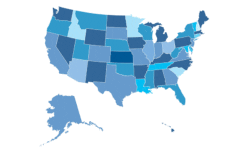Students Can’t Disconnect from the Internet
54% of teens text daily, and many college students are showing signs of addiction.

If you aren’t seriously looking at how cell phone texting and Internet/social media usage are affecting your school and university’s safety and security, a new study from the Pew Research Center indicates you had better start.
“Daily text messaging among American teens has shot up in the past 18 months, from 38% of teens texting friends daily in February of 2008 to 54% of teens texting daily in September 2009,” according to Teens and Mobile Phones.
“And it’s not just frequency – teens are sending enormous quantities of text messages a day. Half of teens send 50 or more text messages a day, or 1,500 texts a month, and one in three send more than 100 texts a day, or more than 3,000 texts a month. Older teen girls ages 14-17 lead the charge on text messaging, averaging 100 messages a day for the entire cohort. The youngest teen boys are the most resistant to texting – averaging 20 messages per day.”
Texting and social media are whole new ways teens and young adults are communicating. Although there are many positive attributes to this development – like parents being able to communicate more frequently with their children – there is also the potential for texting and social media to be abused.
This correlates with a study just completed by researchers at the University of Maryland who found that the college students they asked to give up media for one day showed signs of withdrawl, craving and anxiety. Although the American Psychiatric Association does not recognize “Internet Addiction” as a disorder, this compulsive behavior has all the markings of it.
This may explain why so many victims of cyberbullying aren’t able to disconnect themselves from the very mechanisms that are being used to abuse them: cell phones and the Internet.
As the adults responsible for the safety and security of students, we must start finding ways to understand the implications of this type of communication.
To read the full Pew report, click here.
If you appreciated this article and want to receive more valuable industry content like this, click here to sign up for our FREE digital newsletters!
 Leading in Turbulent Times: Effective Campus Public Safety Leadership for the 21st Century
Leading in Turbulent Times: Effective Campus Public Safety Leadership for the 21st Century
This new webcast will discuss how campus public safety leaders can effectively incorporate Clery Act, Title IX, customer service, “helicopter” parents, emergency notification, town-gown relationships, brand management, Greek Life, student recruitment, faculty, and more into their roles and develop the necessary skills to successfully lead their departments. Register today to attend this free webcast!








